Vitamin D is found in many dietary sources such as fish, eggs, fortified milk, and cod liver oil. The sun also contributes significantly to the daily production of vitamin D, and as little as 10 minutes of exposure is thought to be enough to prevent deficiencies. The term “vitamin D” refers to several different forms of this vitamin.
Two forms of Vitamin D are important in humans: ergocalciferol (vitamin D2) and cholecalciferol (vitamin D3). Vitamin D2 is synthesized by plants. Vitamin D3 is synthesized by humans in the skin when it is exposed to ultraviolet-B (UVB) rays from sunlight. Foods may be fortified with vitamin D2 or D3.
Vitamin D Needs and Deficiency
 The major biologic function of vitamin D is to maintain normal blood levels of calcium and phosphorus. Vitamin D aids in the absorption of calcium, helping to form and maintain strong bones.
The major biologic function of vitamin D is to maintain normal blood levels of calcium and phosphorus. Vitamin D aids in the absorption of calcium, helping to form and maintain strong bones.
Recently, research also suggests vitamin D may provide protection from osteoporosis, hypertension (high blood pressure), cancer, and several autoimmune diseases.
Vitamin D helps your body absorb calcium, which your bones need to grow. A lack of vitamin D can lead to bone diseases such as osteoporosis or rickets. Vitamin D also has a role in your nerve, muscle, and immune systems.
Vitamin D is measured as Serum 25-Hydroxy vitamin D levels. A Serum Hydroxy vitamin D level of 10 ng/mL is low, a level of 15 ng/mL is adequate and a level of 200 ng/mL is potentially toxic
Rickets and osteomalacia are classic vitamin D deficiency diseases. In children, vitamin D deficiency causes rickets, which results in skeletal deformities. In adults, vitamin D deficiency can lead to osteomalacia, which results in muscular weakness in addition to weak bones.
Populations who may be at a high risk for vitamin D deficiencies include the elderly, obese individuals, exclusively breastfed infants, and those who have limited sun exposure. Also, individuals who have fat malabsorption syndromes (e.g., cystic fibrosis) or inflammatory bowel disease (e.g., Crohn’s disease) are at risk.
How to Get Vitamin D
You can get vitamin D in three ways: through your skin, from your diet, and from supplements. Your body forms Vitamin D naturally after exposure to sunlight. However, too much sun exposure can lead to skin aging and skin cancer. So many people try to get their vitamin D from other sources. You need to get anywhere between 200IU to 600IU of Vitamin D a day with the amount increasing as we age.
Vitamin D-rich foods include egg yolks, saltwater fish, and liver. Some other foods, like milk and cereal, often have added vitamin D.
You can also take vitamin D supplements. Check with your health care provider to see how much you should take. People who might need extra vitamin D include
- Seniors
- Breastfed infant
- People with dark skin
- People with certain conditions, such as liver diseases, cystic fibrosis and Crohn’s disease
- People who are obese or have had gastric bypass surgery
Foods high in Vitamin D
In a not very scientific survey I have personally found that many women are very deficient in Vitamin D. My wife and some of here friends have had to supplement a lot of Vitamin D just to try to catch up
Article source: https://www.fitnesstipsforlife.com/vitamin-d.html
Some trends stay with us forever, turning into classic solutions. Others vanish without leaving a trace. You may think that all trends break into these two groups, but that’s not quite true. There is another category of trends whose life has its ups, downs and calm periods. Such trends keep appearing and disappearing all the time. One such trend is the use of split screens.
The split screen took the web by storm several years ago. It was incredibly popular in those days. There were even premium WordPress themes built around this approach. And that’s a big deal. However, slowly but surely its enormous popularity faded away and we started to forget about this interesting layout solution for hero areas.
Recently, it has awoken and reminded everyone about its incredible charisma with some tiny changes in appearance. Asymmetrical split screens are a new twist on the old trend that ignites passion and excites the minds of web developers.
Want to see it in action? Here are some great examples of how asymmetrical split screens are being used in the wild.
The Complete Toolbox for Web Designers
Unlimited Downloads: 500,000+ Web Templates, Themes, Plugins & Design Assets
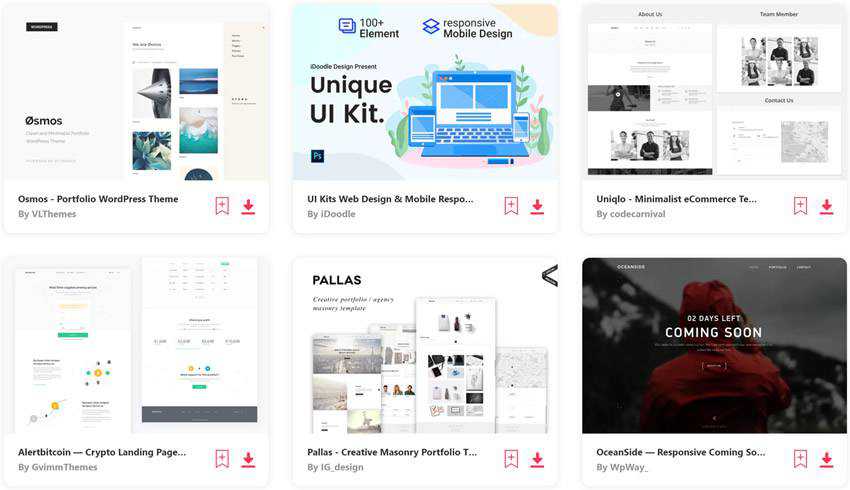
DOWNLOAD NOW
When it comes to asymmetry, the first thing that springs into mind is, of course, the uneven division of the welcome screen. Nourisheats and Golden Green are two typical examples. Their hero areas are broken into two parts, where one of them is bigger than the other.
Nourisheats uses a split screen to turn a regular slider into a real centerpiece of the website. Note, this is not a traditional slider that cycles through a set of pictures; it is a full-screen navigation that supports the top navbar. Visitors have an opportunity to peek into two different sections of the portal at the same time.

The team behind Golden Green goes off the beaten path and uses a solution not for the hero area, but the entire website. Beautiful images come into the fore, drawing the overall attention and making the messages more dramatic. The team also alternates block arrangement to enhance the content flow and readability.
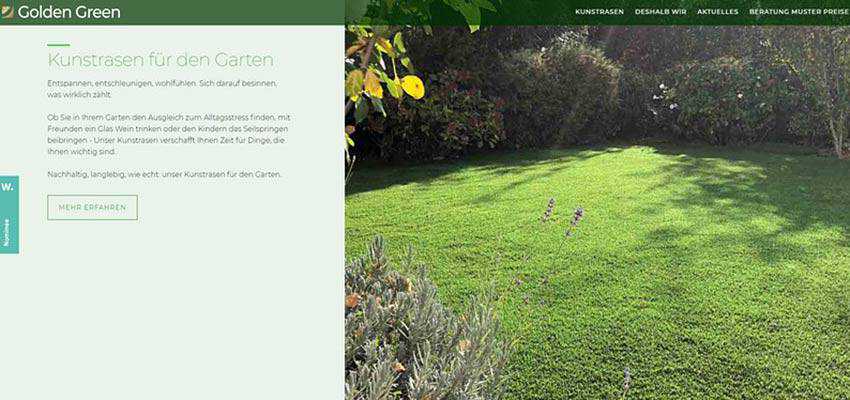
Another pair of examples that adopt the same technique are Effect Lab and Artificial Intelligence – Cytora. Both of them utilize a larger left side of the split. The reason is simple. The left side is the place where users begin to explore the screen. It is our natural reading behavioral pattern. So, it is a spot where something important should reside – like a logotype, slogan, etc. The team of Effect Lab did precisely like that.
They have placed the title and call to action into the left section that, thanks to its size and a generous amount of white space, naturally draw the attention. And the right side was turned into a complementary element that includes links to inner pages presented in a blog-like style. Thanks to vivid backgrounds, they get the visual weight that allows them to compete with the adjacent block, but still not win.
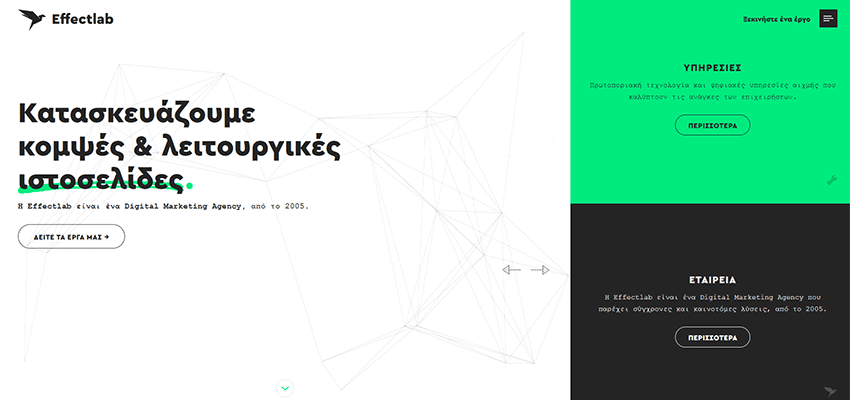
In the case of Cytora, the team has employed the split screen to make the storytelling experience more exciting. Since the topic is Artificial Intelligence, it can be a bit intimidating and annoying for some people. So, the team did the right thing. They managed to pick up the interest using animations that, thanks to a split layout, do not overwhelm visitors. Instead, they serve as pleasant accompanying material.
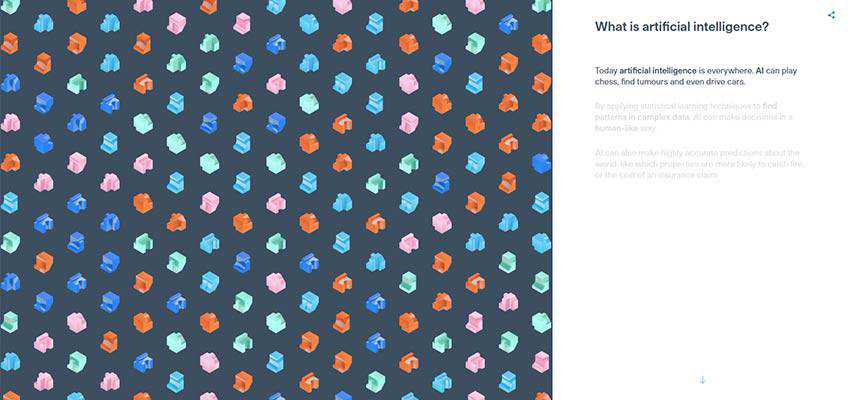
Home Societe and the personal portfolio of Felix Lesouef present a group of seamless asymmetrical split screens in our collection. While in the previous examples, the right and left sides are easily distinguished thanks to vivid contrast, these two show a subtle, almost fragile nature of the concept.
Home Societe meets the online audience with a clean surface and lots of fresh air. While the first block includes a welcoming image and vertical navigation, the second one contains everything starting with the «About» section and ending with «Contacts». The transition between these two areas is pretty seamless: you gently flow from one part into another.

Felix Lesouef makes the most out of a minimal approach, not only in terms of content but also design. His portfolio does not look modest. It seems sophisticated and elegant. While you can delineate three columns, there are just two blocks. The first block includes navigation that is broken into two sections. It always stays static. And the second block shows the content, depending on the chosen option. Neat and clean.
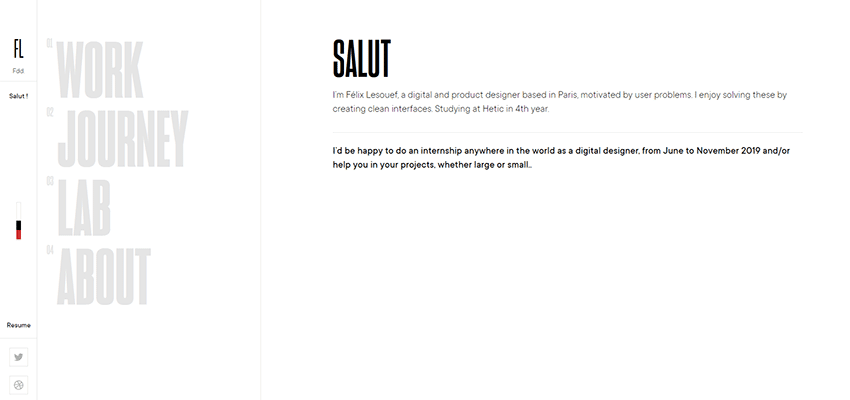
Here’s an example of how you can play with whitespace or overlapping to make things a bit more interesting. Consider 15 Finches. It is the same two blocks as in the previous examples. However, the team has added some vivid margins to the right block and let the title overlap it. In such a way the screen seems to be divided, but still both parts in here form one large picture. Simple and elegant.
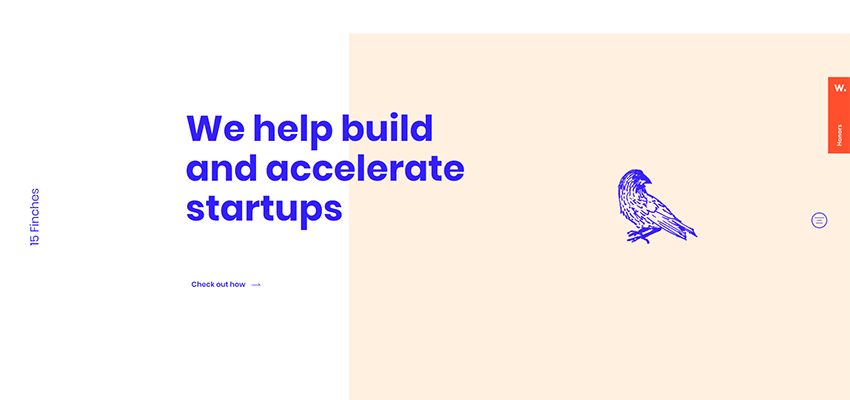
Much like in the previous example, the team behind Fru.it also plays with whitespace to twist the split screen solution. As usual, here you can see two blocks. Note, they are identical in terms of width and height. However, thanks to the difference in image size, as well as lots of white space, the left block looks smaller than the right one. As a result, the latter has more significant visual weight and catches our eye better.
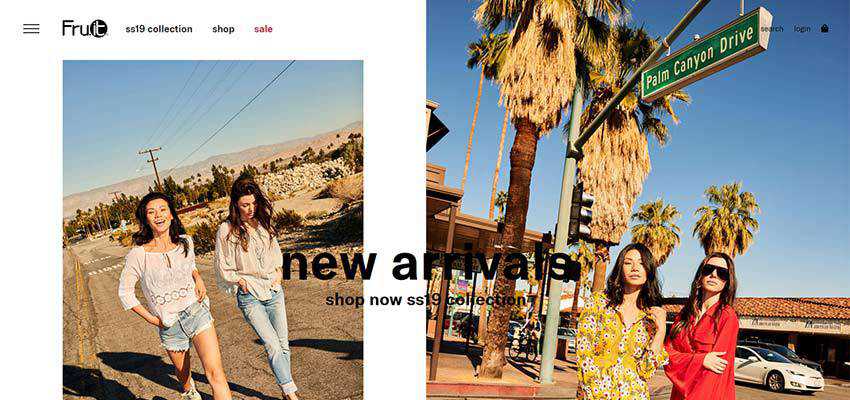
GQ Japan and Locomotive present a small trend in sliders that utilize the asymmetrical split screen concept. In essence, the solution is based on a traditional vertically split layout, where the left side is bigger than the right one. In this way, the left side performs an accompanying role. You can place navigation, logotype, title, etc. in this area.
The right side is intended to bear the content. And that’s not all; there is another block that is located right at the intersection of the two sides. In the case of GQ magazine, it shows a picture, whereas Locomotive uses it to play a video. This block unites everything and, at the same time, serves as an eye-catcher. Clever and interesting.


One of the time-proven ways of introducing asymmetry in layouts is to use the diagonal line, like the team behind Event Filming – NewFlight did. Their slider with portfolio pieces easily separates itself from the competition, thanks to its trapezoidal blocks.
The traditional split screens that have two rectangle blocks evoke a feeling that the blocks follow one another, whereas the diagonal shape makes these two blocks look like two missing pieces of the puzzle that form one area.

Reasons to Split Up
When the split screen first appeared in the web design arena several years ago, it was used to display two different chunks of information to the audience simultaneously. Today, the situation is slightly different.
Modern split screens are used to make the layout more interesting, give the content a piquancy and present one block of information in a creative fashion.
The post Beautifully Designed Examples of Asymmetrical Split Screens in Web Design appeared first on Speckyboy Design Magazine.
Large Cursors: Pointing the Way Towards a Better Web – Designs that demonstrate the usability and aesthetically-pleasing effects of large cursors.

CSSFX – A collection of animated CSS buttons, hover effects, inputs and loaders for use in your projects.
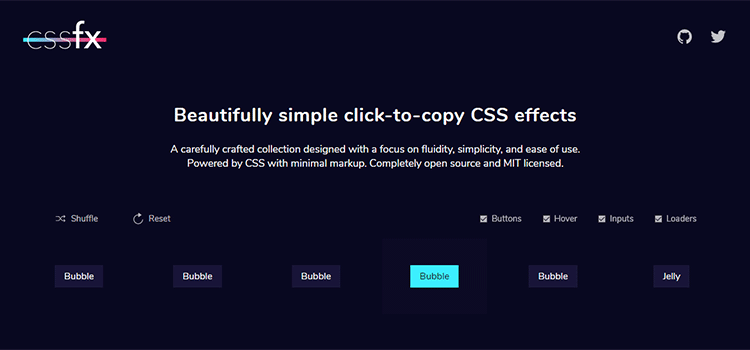
Uppy – An open-source file uploader that can grab files from your device, cloud storage or social media account.
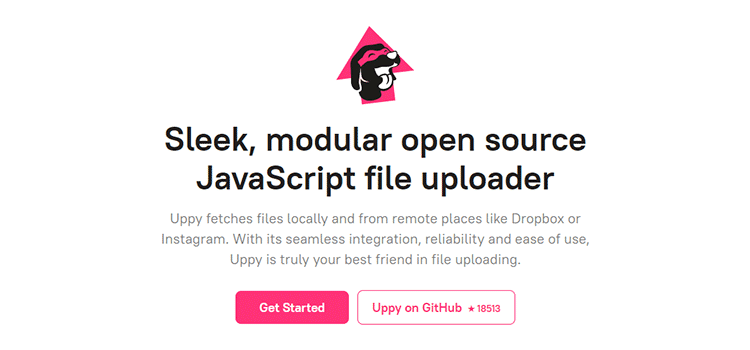
CSS Grid Layout – A “Quick” Overview – Learn the basics of CSS Grid and what it can do for your projects.
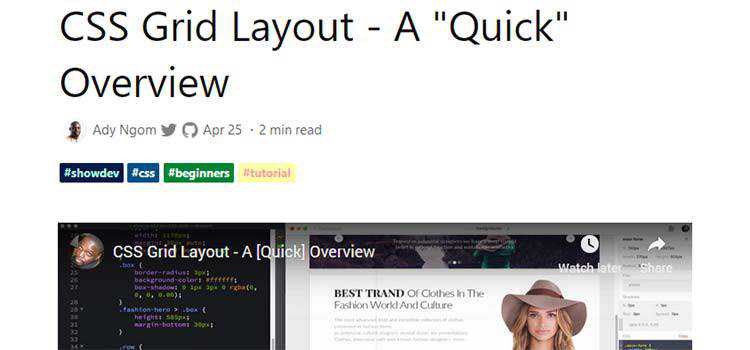
A Quick Guide to Website Photography – Some tips and best practices for picking the right imagery for your website.

The CSS Handbook: a handy guide to CSS for developers – An in-depth look at CSS. Perfect for beginners and pros alike.
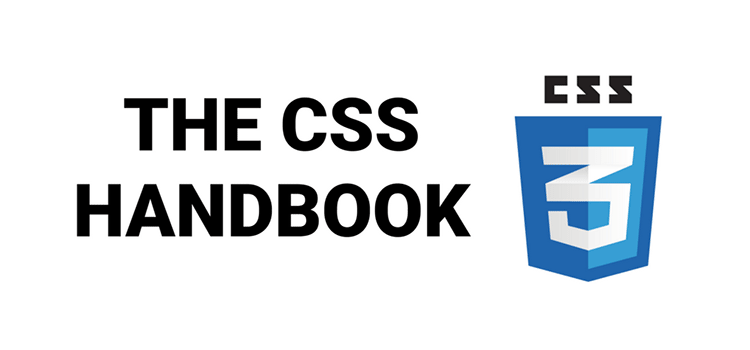
MailtoUI – A script that adds a helpful UI component to standard email links.
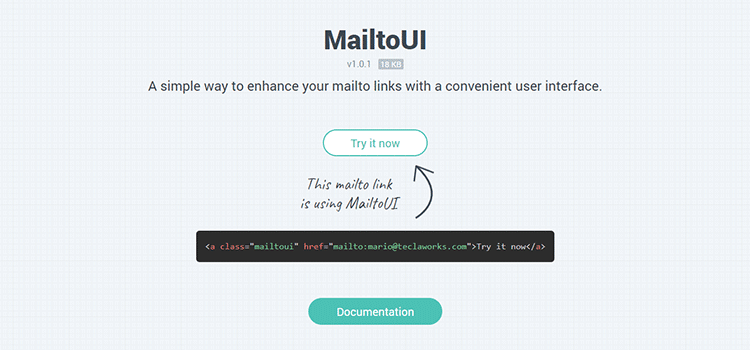
HTTP headers for the responsible developer – Using HTTP headers for creating a safer, more efficient browsing experience.

Using Typography to Establish Brand Identity – A look at how designers are using type to make brands stand out.

5 things to consider when creating your CSS style guide – Tips for making the most out of your style guide.
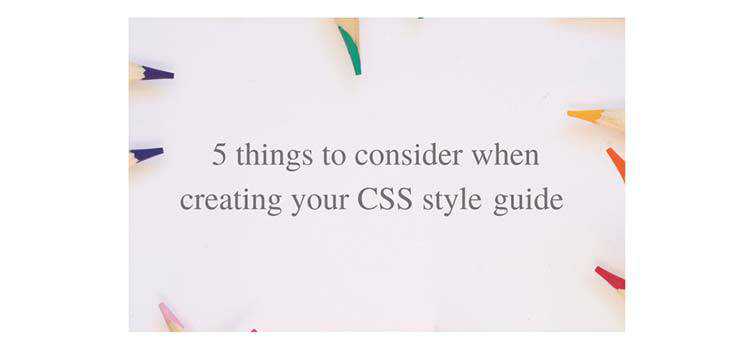
Digging Into The Display Property: Box Generation – A deep look into the CSS display property.
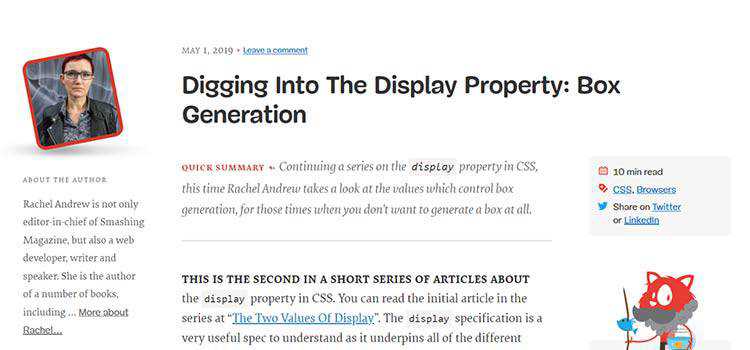
AI-Driven Design: How Artificial Intelligence is Shaping UI/UX Design – A look at AI’s use and potential to benefit designers.

Creating an aspect ratio CSS utility – A quick tutorial on creating aspect ratios, complete with real-world examples.
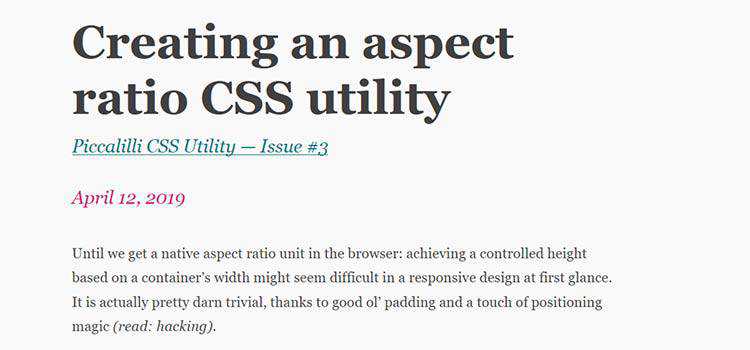
Shepherd – A JavaScript library that helps you guide users through your app.

On the Downlow(res): A Showcase of CSS Pixel Art – Pixel art is still thriving and is being enhanced by CSS.
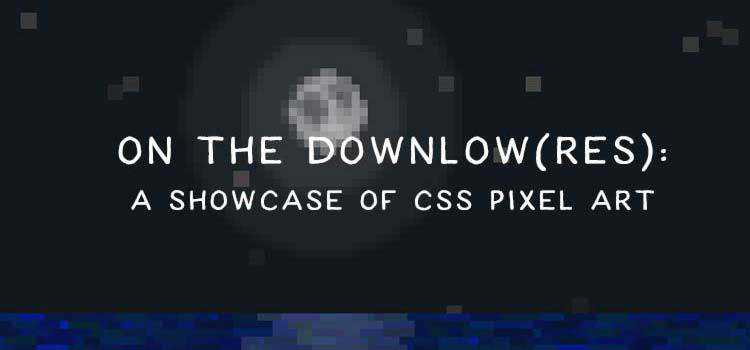
IsometricSass – A Sass library for creating isometric 2D without JavaScript.

When To Launch – A detailed resource to help you determine the best time to launch.

Gangster Grotesk – Available for free, this font features a sharp, contrasting style.
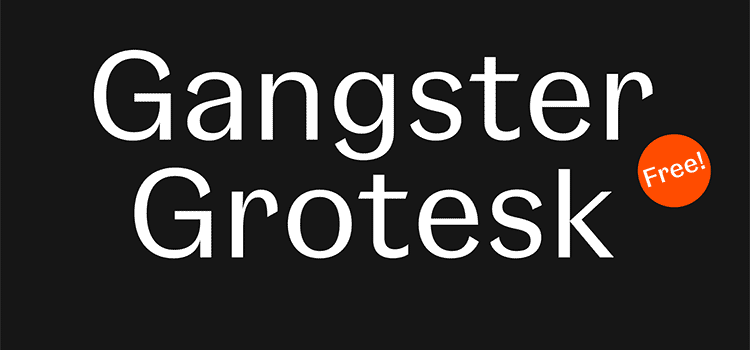
Follow Speckyboy on Twitter or Facebook for a daily does of web design resources and freebies.
The post Weekly News for Designers № 486 appeared first on Speckyboy Design Magazine.






























